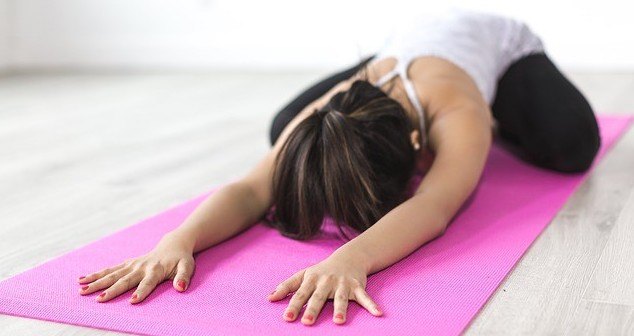There was a time when people used to perform most of their manual tasks themselves. The body was used to bear the brunt of workload, but with time, technology has replaced most of the things. Today we are living a life in which most of the tasks are performed with the help of machines.
Our eating habits have been changed. ‘Junk food’ has replaced healthy food. Sadly, inclination towards easy to cook food is also more apparent these days.
On the other hand, health and lifestyle are not as strenuous as it was centuries ago, and this change in attitude is affecting our lives badly.
And, among one of the dark sides is diabetes, which is a trending health issue of the modern world. Diabetes works as a silent killer and affects our body slowly over time.
However, there is good news for people with diabetes.
Do you know that some exercises can help you with managing diabetes effectively? These easy to do tasks can significantly assist you in maintaining your blood sugar level optimally.
I am sure now anyone with diabetes will be curious to hear about these exercises.
What are the best exercises for people with diabetes? Let us explore!
Type 2 diabetes is quite common as compared to other types of diabetes. If you remember, we discussed differences between Type 1 and Type 2 diabetes, diabetes mellites and diabetes insipidus, and pre-diabetes and diabetes in the earlier articles.
Here we are going to discuss some workouts that can significantly help you to control particularly type 2 diabetes.
Here they are,
1. Walking
Walking is the easiest to do an exercise that is recommended to diabetic patients. You just need a comfortable pair of shoes.
Diabetic patients need brisk walking. Walking is highly popular as an exercise too because people can do it anywhere and anytime, and people feel very comfortable with it.
Walking for 30 minutes to 1-hour is generally advisable. If you find it difficult, then, having 2 to 3 intervals during a 1-hour walk is an option.
2. Tai Chi
This exercise belongs to Chinese culture. In this exercise, body parts are moved in a smooth and slow motion, in a way that helps to relax your mind and body.
Research conducted including two groups; one was with a control group, and the other one was with a group of people who were practising Tai Chi, revealed that Tai Chi exercising group was better able to control their blood sugar level. So, this exercise is proven to be beneficial for people with diabetes.
3. Yoga
Yoga is known as another traditional form of exercise, and it has vital importance for diabetic patients. Yoga helps to enhance the fluid movements in your body and makes our body flexible and durable.
People are using this exercising technique from ages. It proves very beneficial in the management of many other chronic diseases too. Mental wellness is the other key benefits of this exercising technique. Improved muscle circulation easily helps to maintain blood sugar levels.
4. Swimming
Swimming is another highly recommended exercise. It mainly helps to stretch and relax your body muscles and over time you do not feel any stress or pressure on your joints. That is why it is a healthy activity especially for people with diabetes.
It helps to burn your calories and also maintains your blood sugar level.
Swimming helps diabetic patients if you swim at least three times a week. People should swim at least 10 minutes each time.
5. Dancing
You may say it is not a proper exercise as such, but this activity could dramatically help to maintain the blood sugar levels of your body. If your hobby is dancing and you remember the dance steps and movements, then the dancing can be your exercise of choice.
Dancing can give many effects on your health including enhanced brain power and memory. People can take it as a fun activity, and they can enjoy it thoroughly. And, as you move while dancing, you will burn the extra calories too. Blood circulation will be improved, and it will be easy to maintain the blood sugar levels too.
Before doing any exercise, remember you need to have some snacks with you to boost up sugar levels just in case it becomes low or ‘hypo’. I have also noted towards the bottom of this article a few other essential tips for you to follow with any exercise.
You may remember when we discussed the signs and symptoms of diabetes in adults, I noted tingling, pain and numbness in extremities are common symptoms with diabetes, which appears due to the condition called ‘diabetic neuropathy’.
When you have diabetes neuropathy, you are recommended only some exercises, but not all, depending on the severity of the neuropathy.
Exercises for diabetic neuropathy
Neuropathy is known as the damage to nerve cells. This damage may occur in any part of the human body, but generally, it happens in hands and feet.
In diabetic patients, high blood sugar level and continuous hyperglycemia are the main reasons for neuropathy.
Here are the four best exercises for diabetic neuropathy that is proved to be beneficial for people with diabetes. Let us explore more on what are those exercises!
1. Low impact cardiovascular exercise
Low impact cardiovascular exercises are highly recommended for diabetic neuropathy patients. Cycling, swimming generally comes under the low impact activities that much help to increase the blood flow system. This increased blood flow boosts to prevent damage that is caused by the blisters, cuts, and scars and improves their healing.
2. Strength training
Strength training is another solution for diabetic neuropathy. Our muscles, level of insulin in our body and vascular health are highly linked with each other. When you do muscles workout for burning extra body fats that also facilitate the proper pumping of blood to and from the heart. Different strength related exercises can be done in a seated position if you do not feel steady on your feet.
3. Balance and stability work
Diabetes-related neuropathy mostly damages the nerve cells of your feet, so it can make you fall any time due to the weak legs. In this situation, there is a need for balance and stability.
Balance and stability training helps our nerves and muscles and allows them to work in coordination. For maintaining an upright position, muscles of legs, feet, and core are of great importance. This training helps to balance the working of these muscles.
4. Mind-body exercises
Last but not the least mind-body activities are also advised for the people with diabetic neuropathy. Mind-body activities may include meditation, yoga, tai chi, etc. which help to strengthen your nervous system. Different diabetes-related neurological disorders can be handled with the help of these exercises. People with diabetes need to select these exercises according to their body needs and fitness level.
Again, I should note that you should not do any of the above exercises without following the tips listed towards the bottom of this article.
Well, it is not a secret that diabetes is common among overweight and obese people so I think it is not fair to ignore the exercises recommended for those too.
Exercises for obese people with diabetes
Medical experts claim that there is a direct relationship between type 2 diabetic and obesity. Overweight and obese people who are experiencing the problem of diabetes can get help from three types of exercises. Did you know?
1. Aerobic exercise
Overweight and obese people with diabetes may go for aerobic exercises which include, walking, jogging, swimming, cycling, and basketball.
These exercises greatly help to reduce your weight.
Continuance 30 minutes of workout is recommended for these type of exercise for most people, while if you have other health conditions (e.g. heart conditions) then require medical advice before these exercises. And if you find it difficult, then, you can break down these exercises in chunks.
2. Strength training
Once obese people have introduced some aerobic exercise into their lifestyle, then they can also start strength training.
Strength training makes your muscles efficient and keeps your body healthy. So, with the weight reduction, it could help to boost your stamina and power.
3. Flexibility training
Flexibility training is also good for people with diabetes who are also obese. It makes your muscles flexible and allows you to move in your daily routines with great ease. It makes the working of your muscles quite easy because obesity restricts our movement to a great extent. And with the help of this training, daily movements would get quite simple.
How much exercise is needed?
According to the American Diabetes Association, patients with type 2 diabetes need to exercise two and a half hours per week.
This exercising may involve swimming, running, walking, etc. depending on other medical conditions associated with diabetes as noted above. Where appropriate, two to three resistance exercise sessions in a week are recommended to help to promote the muscles and bones healthy. Yoga on a daily basis is also very beneficial for their health.
The Association advocate that diabetic patients must not miss their exercising activity for more than two times in a row.
Exercise Tips for anyone with diabetes
Diabetic patients should follow these exercises tips in their exercise routine.
- Firstly, make a list of your favourite activities from the above, for example, from walking, swimming, dancing, sports, yoga and other fun-loving and relaxing but healthy activities. This to-do list will help you in pursuing your daily routine activities and to sync them well with the daily tasks.
- Consult your doctor and let him/her know what type of activities you are going to perform on a daily basis. Seek advice! If he/she allows you, then you can go for it easily with no doubts.
- If you have to work out for more than one hour, then remember to check your sugar level after that hour. Doctors recommend this checking because it provides an idea of whether you need a snack or something else to maintain the sugar level without going ‘hypo’.
- Always try to have some carbohydrate snacks with you like snack, juice or fruit. It helps to boost your sugar level instantly if it ever gets low.
- Do not jump into a heavy work out or exercise instantly. Initially spend 10 minutes in it, and then you can regularly, over time increase the workout duration to 30 minutes or more. There is no rush!
- Strength training improves the control of your blood sugar level, so you can lift weights or conduct push-ups or weight lifting exercises twice a week. They prove very handy. However, as noted earlier, seek doctors’ advice before making any strength training exercise a part of your exercise routine.
- Try to follow the same routine and the timings. Observe your exercising, eating and medication routine on a daily basis at the same time.
- Try to do exercise with a person who knows that you have diabetes. In that way, they can help you in case your sugar level gets low.
- Always wear comfortable shoes while exercising. This is because if your feet are not comfortable, then you cannot carry on exercises easily and safely. And, the shoe must able to protect your feet and toes from injuries.
- Pay attention to the water intake before, during and after your exercise. Good hydration is essential for you!
- If you get a sore muscle during exercise stop your exercise immediately. Relax and carry on your work out another day and do not be afraid to seek medical advice.
- If you ever experience any pain in the chest, call the ambulance immediately!
What are the health benefits of exercising?
It is a matter of the fact that people who perform exercises daily remain healthy and fresh as compare to those who do not perform any exercising activity. There are so many enlightening health benefits that people can derive easily from exercising.
I have listed some of them below.
- Exercise makes you feel happier: Exercise makes you fulfilled and happier because it changes your mood and helps you to avoid depression and anxiety. When you are not depressed, you will be fresh and happy anyway!
- It helps with losing weight: Obesity is a common issue of the modern world and exercising could dramatically help you to reduce your weight. When you have a balanced and healthy weight, you can move quickly with your daily routines.
- It makes your muscles and bones strong: This is one of the most prominent benefits of exercise. High impact exercises like running; gymnastics helps to make your muscles and bones strong.
- It enhances your energy level: Exercising plays a pivotal role in boosting your energy levels. This is very helpful for building the stamina especially in those people who are suffering from various ‘chronic’ ailments.
- It helps to decrease the risk of chronic disease: Lack of physical activity and work out is a significant cause of chronic disease. In the modern world where manual work and physical activity is lacking the exercise is the best solution for avoiding chronic diseases and to keep your body active and fit.
- It promotes skin health: Natural antioxidants are necessary for our body. They defend our body against germs and make our body healthy from inside. Exercise helps in producing these natural antioxidants, so they keep our skin fresh and healthy and help in repairing the damaged cells of our skin.
- It enhances our memory: With the help of exercise, the function of the brain gets improved. Exercise also enhances our thinking skills and memory.
- It paves the way for sound sleep: It is a matter of the fact that people who do exercise on a daily basis have a sound sleep. When your sleeping needs are satisfied, you can work better and easily be focused while you work during the day.
- It relieves pain: Last but not least, exercise helps to reduce body aches. When you do exercises, your body becomes flexible, and your muscles and bones get strong that help a lot to lessen your body pains.
Conclusion
Diabetes is a mother of so many other ailments, so it needs our attention and healthy active lifestyle a must to manage diabetes well. There are so many exercises like brisk walking, jogging, cycling, yoga, tai chi, etc. that can greatly help in controlling your blood sugar levels. Diabetic patients who are experiencing the problem of obesity and nerve pain, they can also get benefits from different exercises.
Regardless of the type of exercise, you do you should keep in mind some valuable exercising tips to get the optimum results and to avoid any accidents. If you follow the tips and exercises, the outcomes have proven to be very beneficial, and they can drive so many health benefits.
Remember, before adding any exercise to your routine you should consult your doctor and let him know what type of activities you are going to perform on a daily basis. Always seek advice!
Do not ignore if you experience any pain during or after your exercise. If it is a pain in the chest, call the ambulance immediately!










Hello Shani,
I have benefited greatly by reading your valuable article titled Best Exercise for Diabetes. Everyone with diabetes should read the article, and try to be healthy and active.
Diabetes is a very common disease nowadays. My mother has diabetes and it is in our family as well. Every day she needs to take insulin. I must show her this useful article.
First time I heard about Tai Chi came from Chinese culture. I also learned about the different benefits of exercising.
Thank you very much for the excellent article.
Best Regards,
Rgpratap.
Hi Rgpratap,
Thanks for stopping by and for your valuable comment. Comments like the one from yours encourage us to publish more articles for our community to be informed better.
Yes, feel free to share the article with your family and friends. Don’t forget to join the dialogue on Facebook and Twitter too.
Best wishes.
hello, first and foremost, I would like to commend you for this informative about best excercise for diabetes. For me personally, you have really opened my eyes to some great health benefits of regular exercise. Plus I didn’t know before now that regular exercise can in a way cure diabetes.
I kinda feel like I can also help someone close to me with this information have gotten here. Thanks
Hi Seyi,
Thanks for your kind words. We are glad you found the article useful.
You may find our articles about diabetes during pregnancy and diabetes symptoms in women interesting too.
Remember, exercise can help you with pain and high blood pressure management too.
Happy reading!
Wow! Thank you very much for this post. it is not only engaging but alsalso educating. My mum was diagnosed with diabetes over 5 years ago and ever since we have been worried about the implications of a sudden increase in her blood sugar. However, your article has enlightened me on some ways in which she can be assisted to watch her sugar level. Exercise is the key.
I will henceforth place her on a walking and swimming therapy and watch possible positive outcomes in a couple of months time. Thank you once again for this article.
Hi there,
Thanks for your comment.
As Shani suggested in the article and in the reply to ‘Son’, perhaps it is best to consult your mom’s doctor and let him/her know what type of activities your mom is going to perform (e.g. walking and swimming). Always seek advice! If the doctor allows, then she can go for it easily with no doubts.
Let us know if we you require any specif clarifications.
Best wishes to you and your family.
Exercise is really good for people with diabetes. It helps control blood sugar levels, increases energy levels, improves heart health, and promotes emotional well being.
Barring other medical complications, the majority of people with diabetes can and should exercise for diabetes control and for better overall health and well-being.
Thank you Very Much for this Important Information.
Hi Mustapha,
Thanks for your comment and sharing your experience about exercising for people with diabetes. We can not agree more.
Best wishes.
Now I know diabetes is the mother of so many ailments. I never knew dancing and swimming could be a helping exercise for diabetic patients. I thought it’s all about medical attention only. I’ve learnt something new today, at least i can advise a patient to try one of these exercises
Hi there,
Thanks for your comment. We are pleased that you found the article helpful.
Best wishes.
Hello Shani, I really appreciate your time and effort on writing about the best exercises for diabetes.
From your review, it’s obvious that exercise is the key to improving many aspects of life like energy levels, happiness, and decreasing your risk for other health issues. I’m currently overweight and trying to start an aerobic exercise routine, but I’ve heard that running while overweight damages your joints, any truth to that?
Thanks for the article.
Dear Son,
Thanks for the comment and the question.
However, your question is so specific, and the answer depends on your age, the severity of the overweight or obesity (e.g. your body mass index (BMI)) and any other underlying conditions such as arthritis. Therefore, perhaps it would be best to contact your doctor for advice.
I can not stress enough on the tip noted in the article, ‘Consult your doctor and let him/her know what type of activities you are going to perform daily. Seek advice! If he/she allows you, then you can go for it easily with no doubts’.
Sorry, if I could not provide an explicit answer to your question.